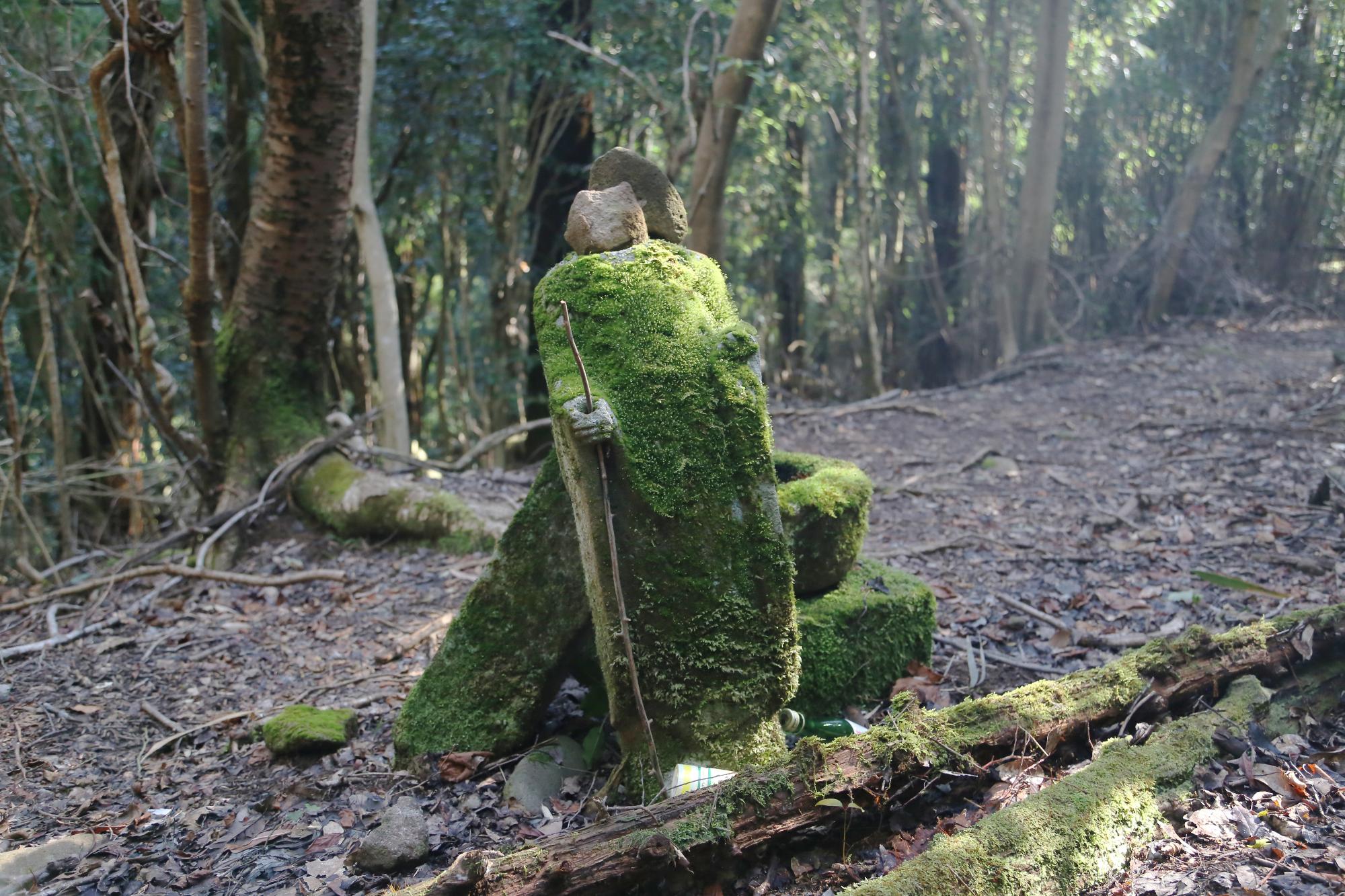Mt. Omoto and Omoto Jinja Shrine

Mt. Omoto depicted in The Illustrated Diary of Minomushi Sanjin (1864)
Mt. Omoto is where the three goddesses known collectively as Hime Okami and the deity Hachiman are said to have first descended from the heavens. The Hime Okami are believed to have appeared on the mountain during the primordial Age of the Gods, while legends recorded in historical documents at Usa Jingu Shrine state that Hachiman arrived much later, in the sixth century.

Omoto Jinja Shrine
Photo by miya.lonester
Omoto Jinja Shrine that stands on the sacred mountain is dedicated to the Hime Okami goddesses (Tagitsuhime no Mikoto, Ichikishimahime no Mikoto, and Tagirihime no Mikoto) who are traditionally associated with the sea. Most shrines have a main sanctuary enshrining the deity with a prayer hall in front, but Omoto Shrine has only a prayer hall, while the mountain itself is the “sanctuary.” Three large stones in the forest behind the hall serve as the sacred objects (goshintai) in which the goddesses reside. The stones are located out of sight, and signs on the shrine grounds warn that trespassers risk divine punishment.

The forbidden sacred area behind the prayer hall
Photo by miya.lonester

The window for praying toward Omoto Jinja Shrine at the Jogu (Upper Shrine)
Omoto Shrine is considered the okunomiya (innermost shrine) of Usa Jingu and is located approximately 6 kilometers to the southeast. Worshippers at Usa Jingu can pray toward Mt. Omoto from afar through a special window cut into the lattice of the outer walls that surround the Jogu (Upper Shrine).
In the past, when Shinto and Buddhism were practiced in a syncretic fusion at Usa Jingu, Mt. Omoto was also home to the Omoto Rokubo, or “Six Temples of Mt. Omoto.” The Omoto Rokubo had a deep connection with the temples on the nearby Kunisaki Peninsula collectively referred to as the Rokugo Manzan. To this day, preparatory rituals for the Rokugo Manzan Pilgrimage are held at Omoto Shrine and Usa Jingu before participants leave for Kunisaki. The Omoto Rokubo temples were destroyed in 1868 during an armed conflict related to the Meiji Restoration, but old stone walls, small altars, damaged statues, and a sacred spring still remain on the mountain.

Ruins of the Omoto Rokubo (Six Temples of Mt. Omoto)

The Headless Jizo statue

Enmeisui spring

Illustrated map of Mt. Omoto (1833)
Mt. Omoto is 647 meters tall, and the forested hiking trail takes approximately 40 minutes (one way) from the recommended starting point to the peak. The path is rocky and steep in some places, and hiking should be avoided in poor weather.

This English-language text was created by Japan Tourism Agency.
- ページに関する評価
-







更新日:2024年03月18日